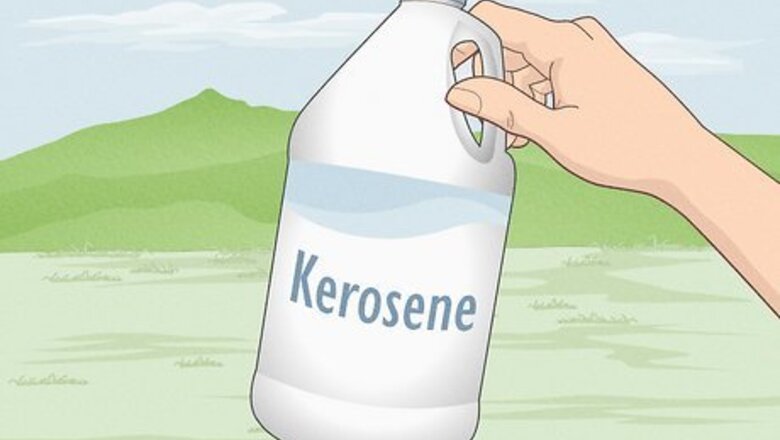
views
Selecting and Using Proper Materials
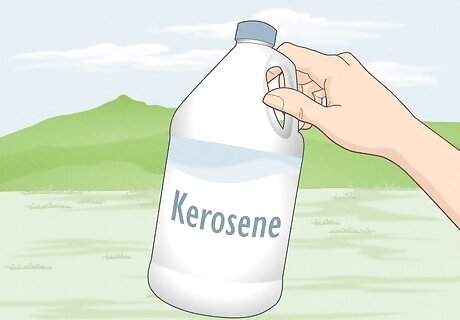
Choose a fuel. You have a couple choices in fuel, each of which produces different results. Take the following things into consideration: flash (ignition) point, taste, smell, and smoke. Popular options include specialized fire blowing fuels (such as Safex Pyrofluid FS), kerosene, and paraffin (traditional lamp oil). You should never use naphtha (white gas), lighter fluid, gasoline, or ethyl alcohol. Ultimately, your fuel of choice should be the one that is least offensive to your senses; everyone has their own personal preferences for fuel, so a little trial and error is necessary to find yours. Fuels like kerosene and paraffin have high flash points, meaning they don't ignite easily. This is desirable for fire blowing because you want to minimize your risk of "blowback" or igniting the fuel's fumes while performing. Kerosene produces a lot of smoke and is also the most dangerous (due to its mostly unrefined quality) of the high flash point fuels; many people also say it tastes and smells terrible! All petroleum-based fuels are extremely toxic and carcinogenic (cancer-causing); these should never come anywhere near your mouth! Even non-toxic fuels such as paraffin should not be inhaled; even minor inhalation of these fuels can cause serious respiratory issues like lipoid pneumonia.
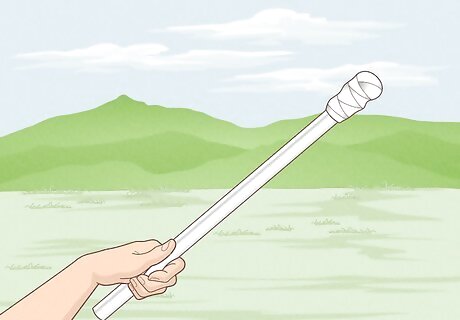
Buy or make torches. Many beginner fire blowers use a simple, homemade torch made from a non-flammable handle (often metal) and an absorbent cloth wrapped around the end for the wick. You will need to bind the wick material to the handle using a fire-resistant cord so it will not unwrap or fall off while lit. Find binding specialized for fire blowers or that is specifically designed to resist burning; this can be found through juggling specialty retailers online (such as at Dube.com). Stay away from cotton cord or typical rope, as these burn easily! You may use anything for the stick portion of the torch that is not flammable. Many people use bent wire coat hangers for this because they are non-flammable, lightweight, and do not transfer heat easily. The stick should be at least 12 inches long. Choose a wick material that does not burn quickly; otherwise your torch will burn itself out too early. Make your wick tip small for your first few practices. Once you have figured out whether you are getting the right sized flame, you can adjust the size of subsequent wicks to reduce or enlarge your flame. Bind the wick to the handle at the base of the wick material, leaving enough exposed material to easily soak with fuel and let it burn for a while.
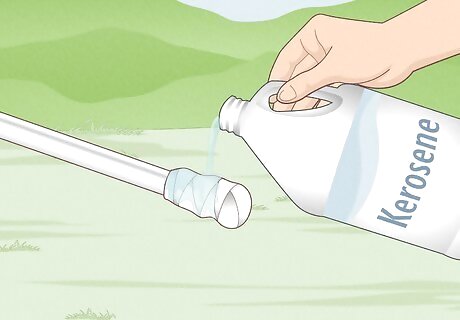
Soak the torch wick in fuel. You can either dip the wick into a fuel container or pour the fuel onto the wick. Either way, make sure the wick is soaked with fuel but is not dripping. In order to get excess fuel off of the wick before lighting it (to prevent spreading fire onto yourself or the ground), shake it vigorously over a fuel receptacle until it no longer drips. Make sure no fuel gets onto the handle (stick) of the torch when it is dipped. Even though this material should be non-flammable, it will still light if it has fuel on it.
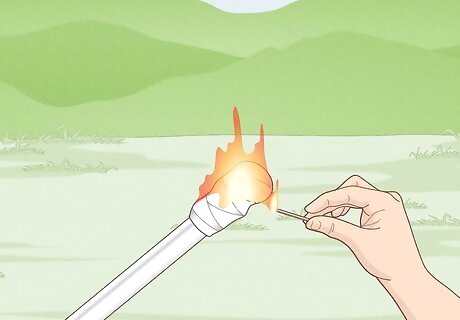
Light the torch. Do this with an ignition source such as a match or lighter. Be sure to hold the torch in your dominant hand, either upright or at arm's length. Light the wick at its base (closest to the handle) so you can quickly move your hand away from it once it lights. Make sure there is no fuel on your hand before you light the wick. Choose an ignition source that can be easily started with one hand, since you will be holding the torch with your other hand. Select an ignition source that allows you to keep your hand at least a few inches from the wick when you are lighting it; something with a long handle or nozzle, such as a barbeque lighter, is a good option.
Breathing Fire

Inhale as deeply as you can. The more air you breathe in, the greater/more prolonged will be the effect of blowing fire, as the flame will subside as soon as you stop blowing. You should get in the habit of turning your head away from your torch when you inhale, so as not to choke on smoke or the fumes from the burning fuel. In order to prevent accidental inhalation of fuel vapor, try to inhale through your nose. If you can get into a rhythm of inhaling nasally between each blow, it will eventually become natural.
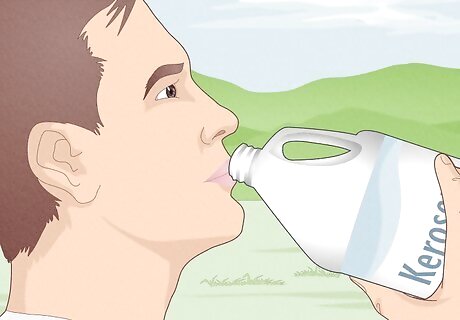
Pour fuel into your mouth. Do this quickly (do not sip it). It is extremely important that you do not inhale (even the vapor) or swallow any fuel! For this reason, you should not attempt to suck the fuel from its container, as this requires simultaneous inhalation and could make you choke. Hold your fuel container with your palm on the backside, with your thumb and fingers pointing toward you. This will help prevent spilling the fuel onto your arm when you pour it. Make sure your fuel is in a container that is easy to pour from; having a spout or small sized opening will help with this. Practice doing this with water before using fuel so you know how much you can hold in your mouth without choking or accidentally swallowing some.
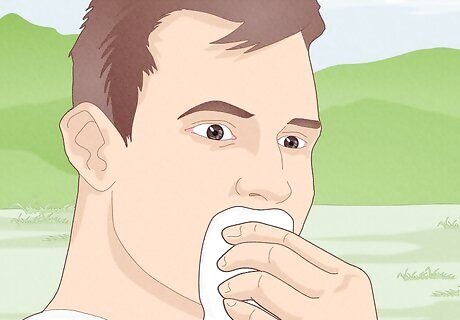
Wipe your chin and lips. When pouring the fuel into your mouth, you may notice that some of it spills out onto your face. Use a small, absorbent terrycloth or thick cotton towel to wipe away any excess fuel immediately after you have poured it into your mouth. This will prevent any "blowback" that may occur by having excess fuel on your face. Hold this cloth in your non-torch-holding hand. This way you can keep the torch as far away from your face as possible while wiping away excess fuel. Consider having spare cloths available in the event that the first one becomes saturated.
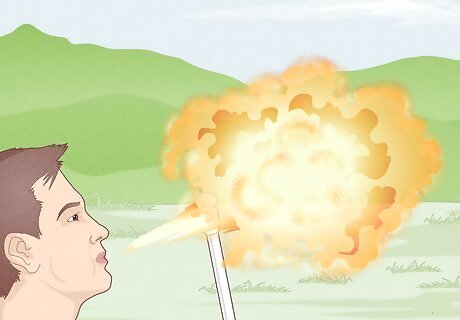
Spray the fuel out of your mouth forcefully. Do this in such a way that the fuel is expelled as a mist. The more forcefully you spray the fuel, the better the fire breathing effect. Hold the torch at arm's length and try to angle your fuel spray up and away from your body so as to avoid spitting fuel onto yourself or any nearby objects. Practice doing this without a torch (no fire) until you have mastered the fuel spray procedure. You should make sure the fuel does not make you choke or gag; also, ensure that you are able to quickly and smoothly spray all of the fuel out of your mouth, leaving none behind. Continue to exhale with force even after you have expelled all of the fuel in your mouth. This will prevent any vapor from remaining in your mouth and will keep the flame from wanting to travel back toward your face. Wait several seconds after exhaling before inhaling again in order to prevent yourself from ingesting any fuel.
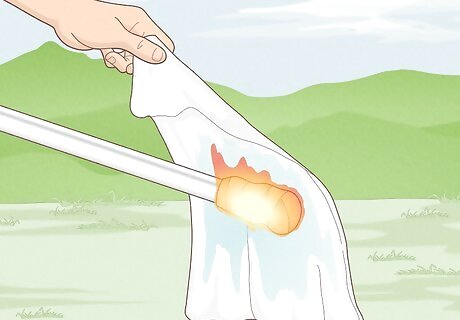
Extinguish the torch. When your performance is finished, the torch can be intentionally extinguished using a safety towel, damp cloth, or flame-treated cloth. To do this, simply drape the towel or cloth over the lit portion of the torch; this will smother the flame and put it out. If you choose to use a damp cloth for this, have a bucket of water nearby that you can use to wet the cloth when needed. Make sure the cloth you use is not flammable or likely to melt. Cotton, for example, is a poor choice of material because it can burn easily if it is not thoroughly wetted.
Taking Safety Measures While Performing
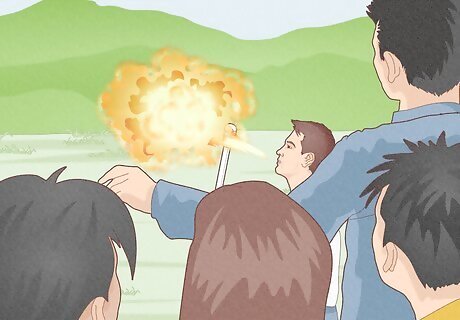
Have an audience guard. A guard functions to keep spectators a safe distance away from you (the performer) while you are working with fire. This is essential, as most bystanders will have never seen fire breathing before and will not know how far the flame could reach. This person should be very familiar with the practice of fire breathing. Fire safety training for guards is a good idea; however, since the guard's main job is to keep the audience at a safe distance from you and your equipment, it is not critical that they be extensively trained in this.
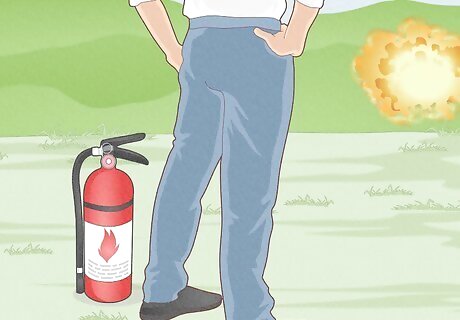
Use a spotter. A spotter is a person (or persons) who is in charge of fire safety during your performance. This individual should be knowledgeable about your performance, the art of fire breathing, and should also have training in wick extinguishing. Your spotter should have a fire extinguisher on hand in case it is needed. Spotters need to be attentive to the safety needs of the audience, the venue, and you (the performer). It is important to include your spotter in your practice sessions so he can become accustomed to your routine before you perform it with an audience.
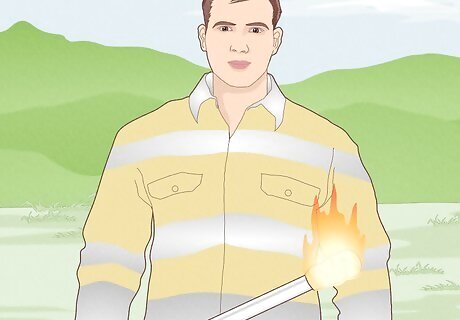
Choose a flame-resistant costume. Depending on the nature of your routine, you may wish to have a special costume. Make sure the material you wear is flame resistant (meaning it will not continue burning once an ignition source is removed) or, at the very least, not particularly flammable. Cotton and synthetic materials that tend to melt easily are not recommended. Your costume should be able to withstand 800 degree temperatures for more than three seconds without catching fire in order to be considered flame-resistant. If your costume is not already flame-retardant, you can treat the material with a flame retardant substance made for clothing. Practice with your planned costume before wearing it for a performance. Make sure spotters and guards are also equipped with flame-resistant clothing.
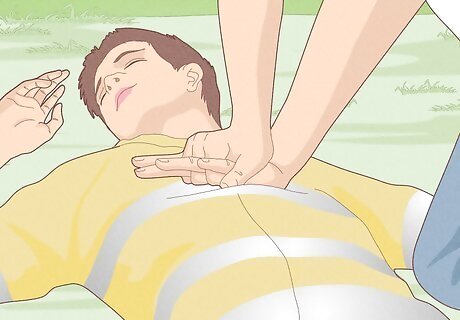
Obtain first-aid training. Fire breathing is very dangerous, and your chances of having an accident are greatest when you are first learning. Be prepared for dealing with injuries by becoming trained in first aid before you attempt fire blowing. Your first aid training should include CPR and proper techniques for immediate treatment of burns. You should always have a first aid kit on hand when practicing or performing fire blowing. Guards and spotters should also have first aid training. If you are performing a large, organized event, arrange to have an ambulance standing by in case you or someone else is injured during your performance.













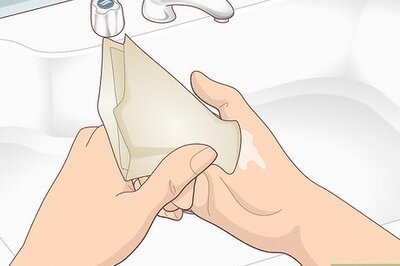

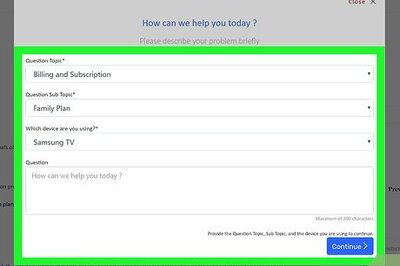



Comments
0 comment